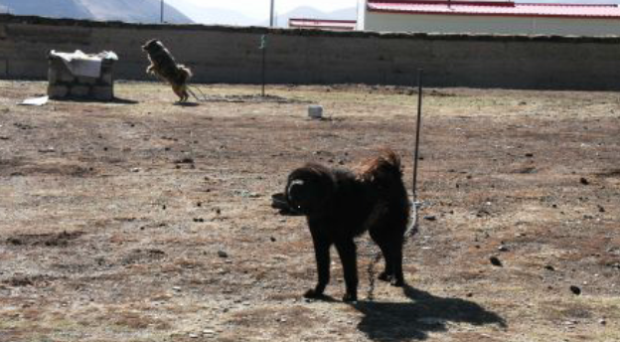
Echinococcosis (also called hydatid disease) is a serious, zoonotic, parasitic disease of tapeworms that exists as two main forms in humans: cystic echinococcosis and alveolar echinococcosis. According to a 2005 national survey in China in the endemic areas, the positive rate of echinococcosis was 12.04%. Between 2004 and 2008, 10,790 new patients with echinococcosis were reported, mainly from the provinces of Sichuan, Xinjiang, Qinghai, Gansu, Ningxia and Inner Mongolia. Sichuan Province reported 10,037 additional cases between 2007 and 2012 resulting in an average of 807 new cases per year.
The cost of antiparastic drugs
Introduction of better Echinococcus control would not only make life better for people threatened by the infection, but also save about 3 billion RMB of economic losses incurred in the food industry.
In a 2013 estimate of the total Chinese market, the demand for veterinary antiparasitic drugs is about 4 billion RMB, 1.5 billion of which represent drugs against cestodes and trematodes (tapeworms and flukes). Based on these figures, the annual sale could reach 800 million RMB for the new formulation of praziquantel (PZQ) and diagnostic reagent needed to protect all people and livestock at risk of echinococcosis in the endemic areas.
Introduction of better Echinococcus control would not only make life better for people threatened by the infection, but also save about 3 billion RMB of economic losses incurred in the food industry. Indeed, the financial burden of cystic echinococcosis of global, animal health costs is growing at a rate of US$ 2×109 annually.
Treating dogs to protect against echinococcosis
Anthelmintic treatment of owner dogs using PZQ is a recommended control procedure in many countries. However the difficulty in effectively blocking transmission has slowed progress and it can take decades to eliminate echinococcosis in the endemic areas.
The Government of China is conducting an approach where every dog with a known owner is treated with PZQ once every month, which should break the Echinococcus life cycle. In the Tibetan area, however, this strategy does not work well due to the amount of dogs without owners. In addition, frequent dog treatment is both time-consuming and costly.
In the Tibetan area, however, this strategy does not work well due to the amount of dogs without owners. In addition, frequent dog treatment is both time-consuming and costly.
Extending the treatment interval may be necessary in economically resource-poor countries or in areas where there are severe logistical constraints, like the Tibetan Plateau. In such cases, it would be essential to combine periodic anthelmintic treatment with other approaches such as vaccination of sheep.
The strategy to treat only 1 – 2 times per year, which was used in the period 1986 – 1991, led to strong environmental contamination by Echinococcus eggs. This was shown in Xiaoguai Village, Karamay City and the Xinjiang Uygur Autonomous Region. In Turkana, Kenya, this approach failed to control reinfection of dogs when only 59% of all registered dogs were treated.
To overcome these shortcomings, new delivery strategies, such as PZQ-loaded hydrogenated castor oil solid lipid nanoparticles and various forms of slow-release PZQ implants, have been tried. Unfortunately these strategies have side effects, e.g., the former approach only releases PZQ for 13 days and therefore needs to be frequently repeated, while implants require surgical intervention that carries risk of infection.
Analyzing praziquantel
PZQ is a racemic mixture of two enantiomers (molecules that mirror each other), R-(-)-praziquantel (R-PZQ) and S-(+)-praziquantel (S-PZQ), with R-PZQ being the main effector. The importance of R-PZQ, is emphasized by the fact that research focused on improved production of this enantiomer has been designated a key priority by the UNICEF/UNDP/World Bank/WHO Special Programmme for Research and Training in Tropical Diseases (TDR).
In light of this, we felt it was important to follow the presence of both enantiomers when praziquantel was administered. We used beagle dogs as the experimental animal and used a biodegradable drug/matrix preparation allowing the PZQ to be slow-released in a sustained way via subcutaneous injection.
The objectives of this study were to investigate the pharmacokinetics of R-PZQ and S-PZQ and the effect of the new drug formulation. We wanted to analyze the release characteristics in vivo for future application in a field trial aimed at echinococcosis control.
Two hours after administration, peak concentrations of R-PZQ and S-PZQ, were achieved. After 180 days, the average plasma concentration of R-PZQ in the six dogs had decreased to 13ng/ml. The average concentration value of S-PZQ was higher than that of R-PZQ in the first 90-day period but fell afterwards and could not be accurately estimated when dropping below 20ng/ml (the lower methodological limit for this enantiomer).
Praziquantel given as an in situ slow-release formulation by subcutaneous injection resulted in concentrations of the active principle in beagle dogs, which should be capable of resisting new Echinococcus infections for at least 6 months. The new formulation of praziquantel represents a potential, alternative way of presenting medication against tapeworm infections in dogs.
Comments